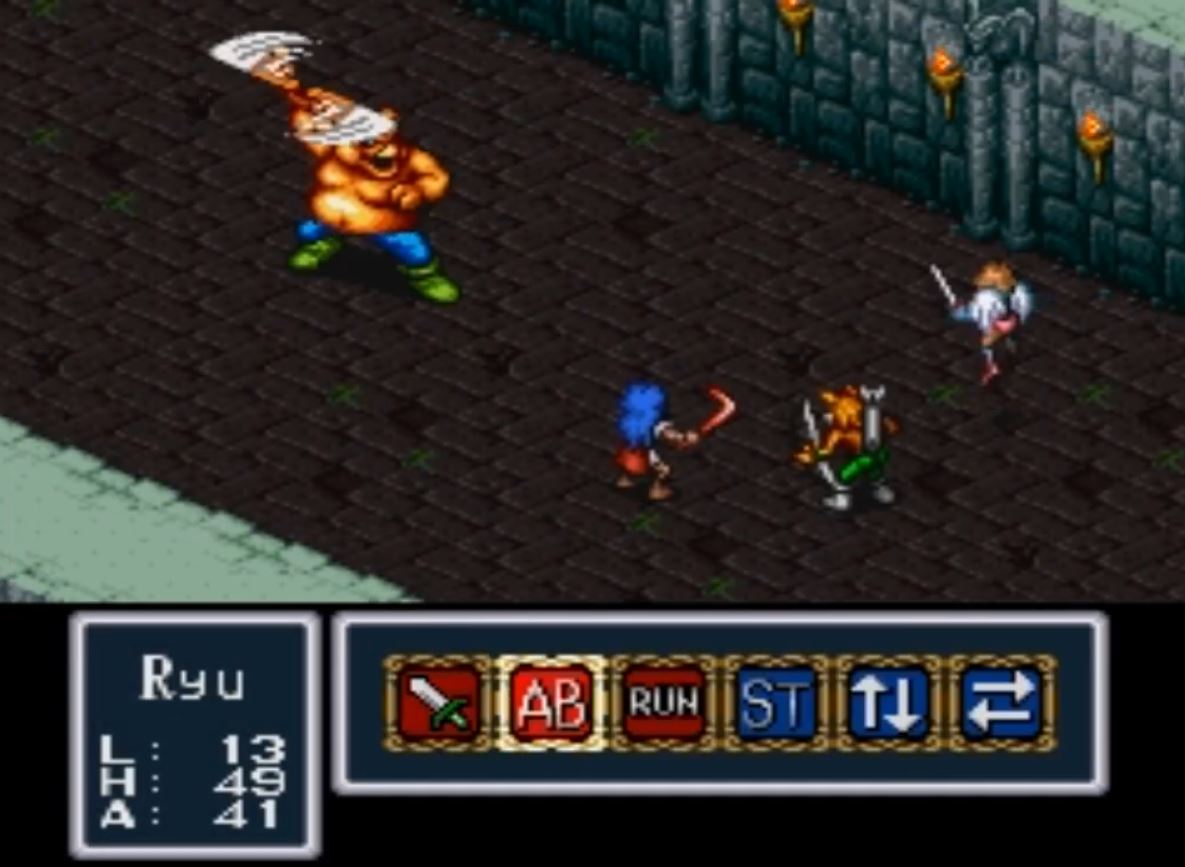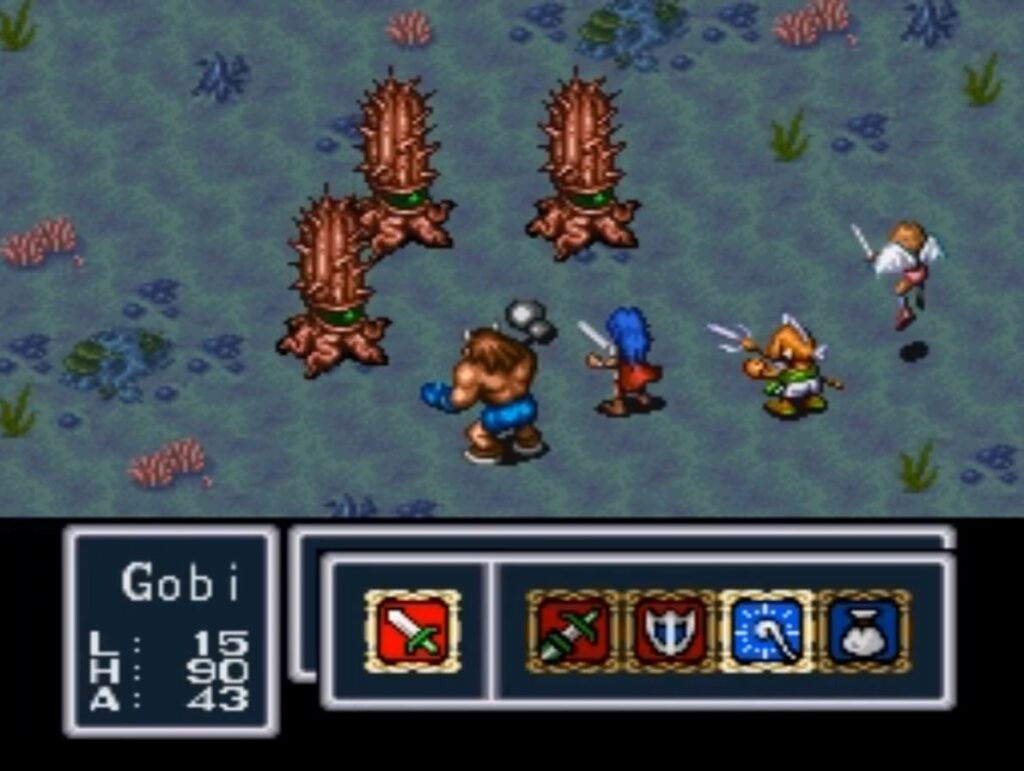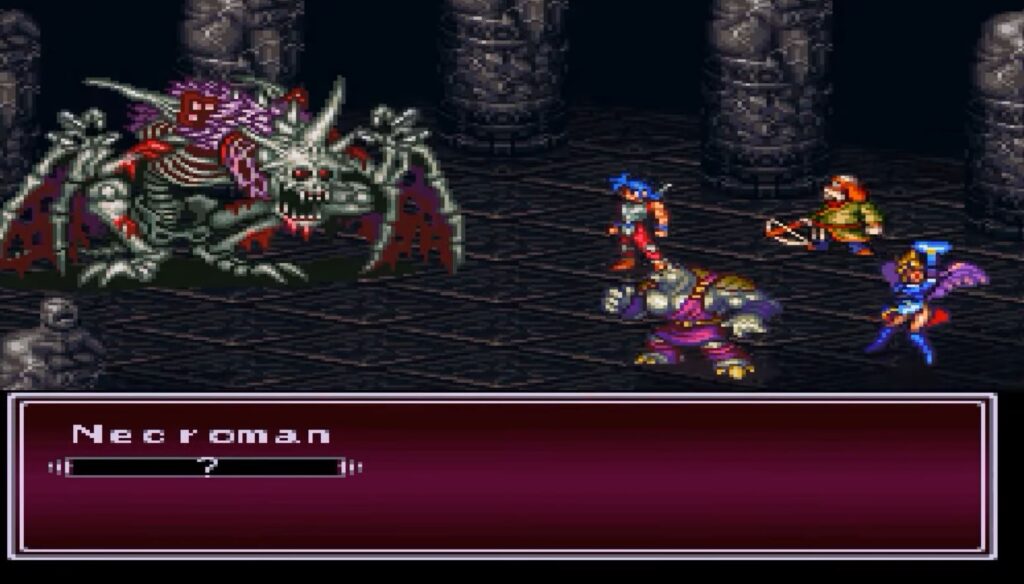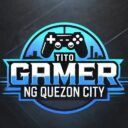My huge interest in JRPG started with Breath of Fire 2, but I was stuck playing the first Breath of Fire for years until I could afford to buy the second game. For a long time, I thought the sequel was the better game out of the two. After careful consideration, I have chosen the best out of the two Super Nintendo RPGs.
Let me go through the first two Breath of Fire JRPGs and explain which one is the best.
Core Gameplay Similarities
Both games deliver classic Super Nintendo JRPG GOODNESS. You explore towns, forests, and dungeons as you talk with NPCs and solve simple puzzles. You build a party of up to four fighters and swap members. Encounters are random in dangerous areas and use turn-based combat driven by each character’s agility. Lets go through what they both share.

Party System and Personal Actions
Each recruit brings distinct magic spells and personal abilities. You use their skills and magic in battle. In the overworld or dungeons, party members can do special actions like Bo and Bow shooting arrows to hunt animals for consumable items.
Turn-Based Combat
Random battles appear every few steps in hostile zones. You issue commands for each character at the start of each round, then watch actions unfold in agility order. Both Breath of Fire games follow the usual JRPG turn-based combat gameplay.
Key Gameplay Differences
Since it is a sequel, Breath of Fire 2 does some things differently from the first game.
Dragon System
The Dragon Ability is the key feature of Breath of Fire since it is Ryu’s paramount ability. The first game lets you transform Ryu into one of nine different forms. Dragons here act like party members who also have their own unique skills. To change back, Ryu either uses the ‘revert’ spell or gets knocked out by the enemy.
Breath of Fire 2 is different, where Ryu’s abilities act like spells. Each dragon form uses up all of Ryu’s AP. Its damage also depends on the amount of AP you use, where using all of your points results in a maximum damage output. While you can use your dragon form at 1 AP, expect a very weak damage output from this point of usage.

Menu System and Encounter Feedback
The original uses an icon-based menu with controller shortcuts for quick access. The sequel transitions to a text-based interface and introduces a monster meter that displays your likelihood of encountering foes.
Party Management and Switching
Breath of Fire lets you swap any party member anytime, even mid-battle. Breath of Fire II restricts swaps to save points and special zones, making each choice more strategic and deliberate.
Town-Building and Shaman Fusion
Only the sequel lets you rebuild a town by donating currency for new houses and recruiting special villagers. You can fuse Shamans with heroes to grant extra forms and abilities in combat, a feature not present in the first game. The Shaman Fusion is also thre reason why the party management requires you to visit a specific point to swap members.
Formation System and Combat Tactics
Breath of Fire II adds a formation feature so you can boost a character’s speed, defense, or attack by arranging positions before battle. This formation is essential for many party members like Katt who has a high attack, but incredibly low defense. You can either have Katt at the front to quickly dispatch common enemies or have her at the back against bosses.
Which Breath of Fire is The Best
There are problems with both games that will affect my judgment. These problems come from the main feature and characters.
Breath of Fire 2 Dragons
The dragon abilities in BOF 2 are incredibly stupid even though this is the best attack in the game. You need to spend ALL AP POINTS to achieve a high output. A problem with this system is that it becomes difficult to level up.

Imagine a recovery item that gives you 100 AP. You can do full damage with your dragons in each turn when Ryu uses that ability and a slow party member gives him an item. When Ryu’s AP reaches 101 AP as he grows stronger, you can only do 99% damage on each turn or waste that recovery item in one turn. Keep in mind that the base damage of each dragon form does not increase as you grow stronger.
Basically, levelling up is the worst experience for Ryu in Breath of Fire 2. Breath of Fire 1’s dragon is significantly better since your damage increases while the AP cost have no effect on the damage output. Someone at Capcom likely saw the mistake with Breath of Fire 2 that they made a better version of the dragon ability of BOF 1 in the third game.
Breath of Fire 1 Bland Characters
I have seen many JRPGs with amazing stories, but BoF 1 does not have it. The character interactions and dialogues were forgettable. You have the likes of Karn, who picks locks, Gobi, who is a fish merchant, and Ox who builds things. There is not much of a backstory between these party members.

In BoF 2, you have Sten, who is an outcast of the Highlander Tribe, Jean, who wants to stop his sister’s forced wedding, and Ran,d, who ran away from FarmTown because of his mom. The depth of characters in the second game is greater than that of the first game. Even Ryu’s parents in the sequel are fleshed-out characters in Breath of Fire 2.
Character Fusion
Before the Shaman Fusion, there is Karn. The thief’s real and functional ability lies in combining with other members of the party to create a unique unit. There is Shin, a combination with Gobi and Bo, who has a high attack and speed stat with low defense (similar to Katt).
Breath of Fire 2’s Shaman Fusion requires you to find Shamans who will fuse with your party members. Fusing with them grants your characters a boost to their stats and AP. Remarkable fusions can also create unique characters that have higher stat increases and newer abilities.
There are issues with the Shaman Fusion. It takes away the character’s overmap abilities like Sten’s arm extension and Katt’s smash. Should any of the characters revert back to normal, you need to travel all the way to the town that lets you do the fusions.
While Shaman Fusions have their problem, it is the better version of Karn’s fusions. It feels like improving each of the characters rather than creating a new one from existing units. In addition, the character fusions’ designs look like upgrades of the character. They all look and feel like a better version of themselves.
Fishing Game
Spoiler alert. There is no fishing game in Breath of Fire 1. You simply cast your line with a bait and it will give you whatever fish (or item) is in the water. Breath of Fire 2 is where fishing is an actual game. You cast a line and wrestle with the fish to successfully land them. While it is not the best iteration of the mini-game, Breath of Fire 2 fishing actually lets you catch a fish with skill.
Overall Winner
Breath of Fire 2 is the clear winner here based on the character story, fusions, and even the fishing game. My major complaint is still Ryu’s dragon ability. Thankfully, the fusion characters are major assets when beating the game’s final boss.
This is not to say that Breath of Fire 1 should be ignored. It stil has the best dragon system and is a major staple in my classic JRPG lineup.



